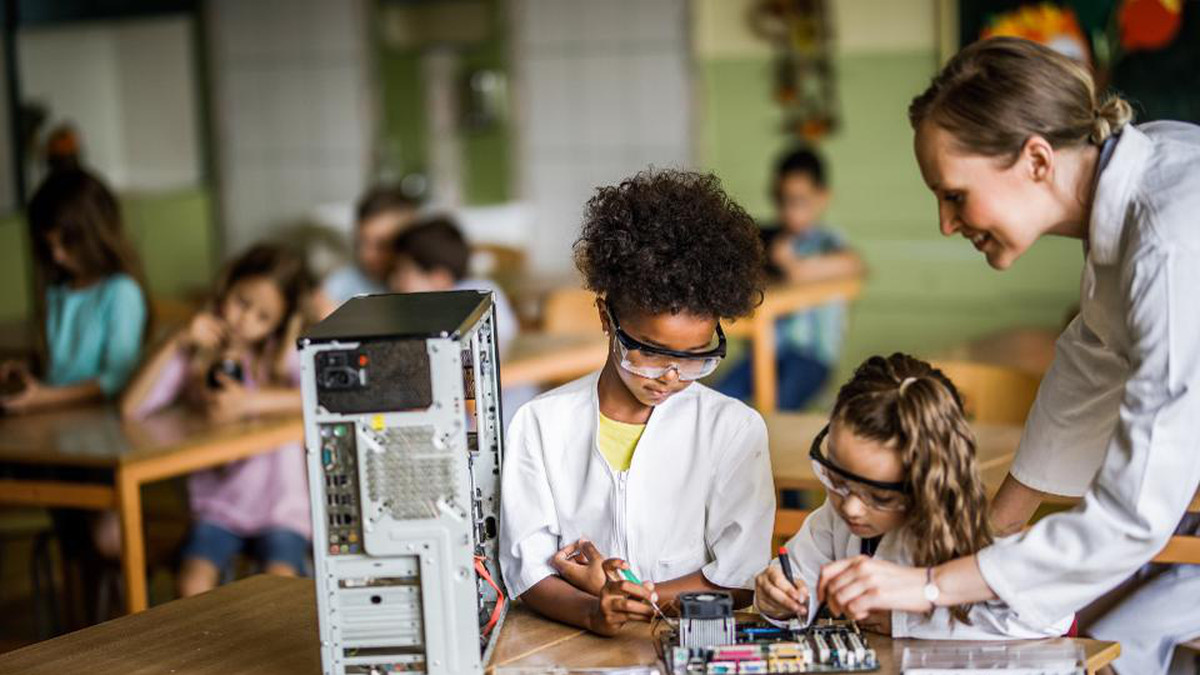California approved its first budget under Gov. Gavin Newsom on June 13, making a substantial down payment on education for the state’s high-tech economy. The budget significantly increases the state’s investment in schools and includes new funding for expanding broadband infrastructure in low-income communities and teaching computer science in the schools. These investments advance the effort begun in 2018, when the State Board of Education adopted computer science standards for K-12 students, making it one of only seven states in the nation with such standards.
As California focuses its attention on technology instruction, there is likely to be pushback. Across the country, a heated debate continues about the role of technology in the classroom. This is an age-old argument, which often goes something like this: Reliance on technology hurts learning, weakens students’ minds, and undermines teachers’ hold on their attention.
How old is this debate? Socrates famously railed against using the hot technology of the time — books — in a fourth-century B.C. dialogue with Plato. Socrates said of the written word, “This discovery of yours will create forgetfulness in the learners’ souls, because they will not use their memories.”
Over time, society has figured out how to use books for education reasonably well (along with the pencils and markers that replaced quill pens, and the white boards that replaced chalkboards that replaced stone tablets). Now, two and a half millennia hence, we find ourselves in the midst of a similar debate about the use of digital technology in the classroom.
Computers, tablets, iPhones and apps — none of them is a silver bullet or a magical solution to end education woes. All offer tools to skilled practitioners in the classroom and, in the rapidly developing realm of education technology, some tools are terrific, while others are not.
My research with Stanford colleagues shows that how technology is used is key. We found that technology can be helpful in advancing learning for high school students who are at greatest risk of failing courses or dropping out when it’s interactive rather than one-way, used to support discussions and projects with peers and teachers, and serves as a tool for creation rather than passive consumption. When technologies try to replace teachers, research consistently finds little benefit.
There is no doubt that some concerns about education technology are well-founded. It’s unwise, at school or at home, to put kids in front of screens without adult involvement for long periods. Privacy worries are real for all of us, and nowhere more so than with our children; devices and apps that compromise privacy and sell data have no place in our kids’ lives. And there’s plenty of technology out there that simply doesn’t do much for children’s learning.
But there’s a burgeoning field of innovative digital technology that can help teachers help students.
For example, research from SRI International demonstrates how technology tools for reviewing and analyzing homework can help teachers strengthen students’ math skills. Another study shows how innovative uses of technology allowed at-risk students to outperform their peers on state reading tests when they researched ideas online, wrote and revised literature blogs, and developed their own websites to communicate their research. In some schools that blend collaborative project-based learning with technology supports, students who previously struggled often experience significant learning gains as they become more engaged.
As someone who works closely with educators, I have seen how teachers are sharing curriculum and lesson plans with each other online; how assistive technologies are supporting students with disabilities; and how young people are using technology for research and to produce newspapers, projects, and websites, as well as to program their way to new apps and solutions. Sometimes that technology enables them to engage in inquiries that address real-world problems with experts and other students around the world.
Equalizing access for low-income students is particularly important. While wealthy families can purchase and curate their own approaches to technology, studies show that lower-income families have far less access to the most up-to-date and useful tools, and neighborhoods in poor communities often lack the bandwidth needed to support serious uses of technology. If schools do not support cutting-edge technologies, these students will be left behind in digital literacy.
California’s investments will begin to equalize the digital playing field. And the state’s emphasis on learning computer science aims to make teachers and students the masters of technology rather than its subjects. But there’s more work to do. We will need a deeper understanding of what works well and why, so that we can build on the successes and promise of these new approaches. We will need ongoing investments in professional learning for teachers, so that they can take maximum advantage of these tools on behalf of student learning. We will need balance and thoughtfulness in the use of computers, so that students are also spending plenty of time exercising their minds and bodies in other ways.
Fear of new education technology is as old as civilization itself. But with well thought out, evidence-based approaches, we can use the wealth of new tools available to help our teachers teach and our children learn in new and powerful ways that allow them to fully engage the world around them.
This article was written by Linda Darling-Hammond from Forbes and was legally licensed through the NewsCred publisher network. Please direct all licensing questions to legal@newscred.com.
![]()



